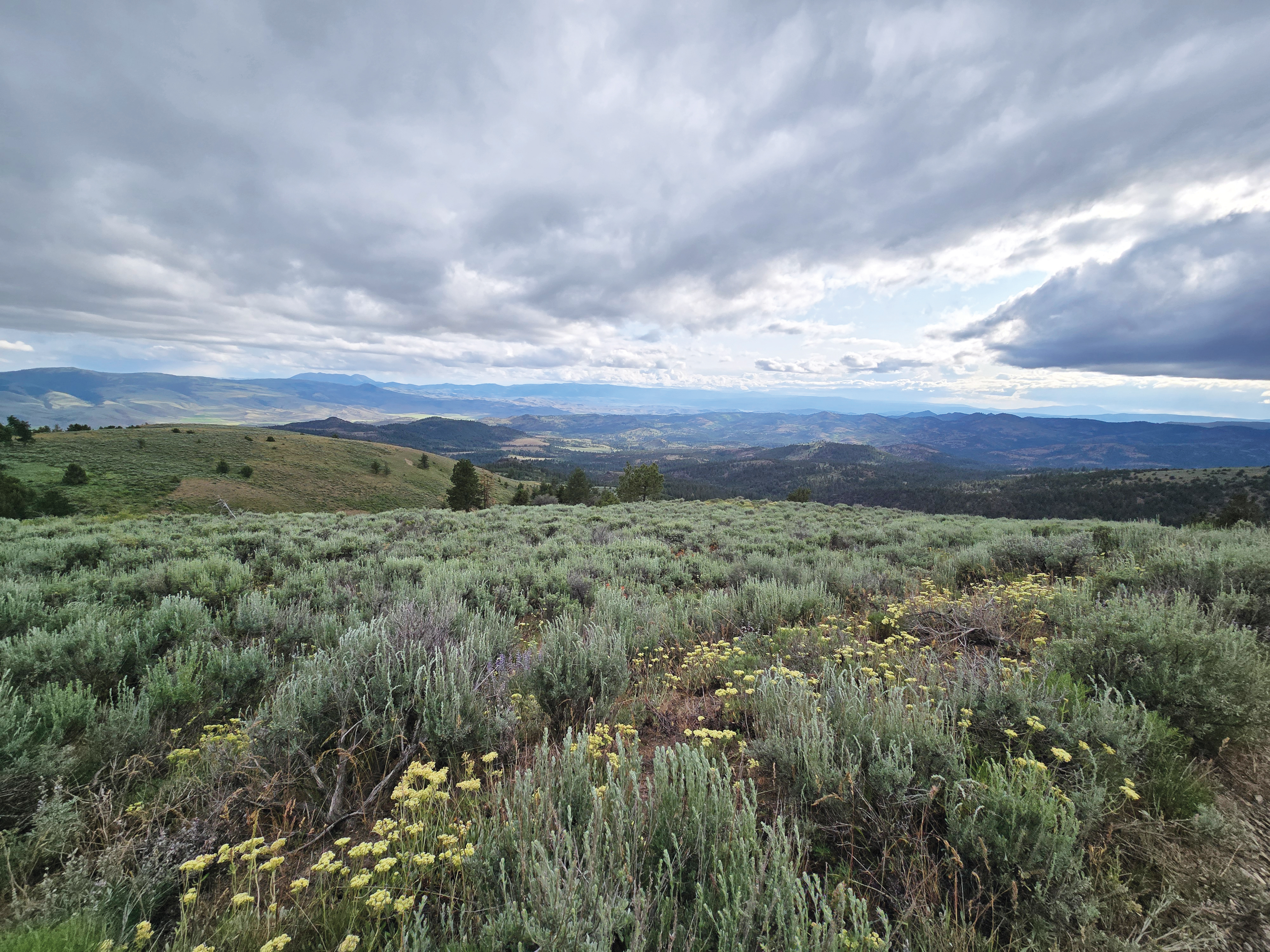Key Oregon permit approved for Boardman to Hemingway transmission line
Published 12:05 pm Tuesday, September 27, 2022

- The setting sun silhouettes transmission lines in Boardman in February 2022 near the planned future starting point of Idaho Power's proposed 300-mile Boardman to Hemingway transmission line, which is slated to cross through Union County.
SALEM — The proposed Boardman to Hemingway transmission line took another step toward its march across Oregon.
Oregon’s Energy Facility Siting Council on Tuesday, Sept. 27, approved a site certificate for the project. The permit authorizes construction of the 290-mile, 500-kilovolt line across five Eastern Oregon counties, including Union County. Federal agencies have already granted permission for the line to cross land they manage.
The proposed transmission line would connect a new station near Boardman to an existing substation in southwest Idaho near Melba. Supporters of the project say the transmission line would provide a crucial link to move energy, much of it from hydroelectric, wind and other clean sources, between the Pacific Northwest, where energy use peaks in the winter, and the Intermountain West, where energy use peaks in the summer.
“This is one of the biggest steps in the history of the project,” said Sven Berg, communications specialist with Idaho Power, a major funder of the proposed B2H project.
The Boise-based company began working on the project about 15 years ago, according to Berg. Idaho Power and Portland-based PacifiCorp plan to jointly own B2H.
The transmission line would cost between $1 billion and $1.2 billion. Towers along the line would be as high as 180 feet. In comparison, standard towers are 75-90 feet tall.
Ongoing project
Idaho Power in the release said construction could start in 2023. Berg noted, however, that a lot more work needs to be done before construction of the line can begin.
“It is not entirely finished by any means,” he said.
This work includes securing a permit from Idaho’s Owyhee County and approval from the public utility commissions of Oregon and Idaho.
Berg said he feels good about the connections Idaho Power has made with people in La Grande, Pendleton and Malheur County in the process of getting plans for B2H set up.
“Their input has helped us come up with a better project,” he said.
Various routes through Union County were initially considered as part of the B2H. The Oregon Energy Facility Siting Council’s approval means the Morgan Lake route would be followed when B2H, if formally approved, crosses Union County. The proposed Morgan Lake route runs from Morgan Lake Park, a few miles outside of La Grande, southeast to Ladd Canyon and into Baker County.
Voices against B2H
The B2H line has faced staunch opposition from many residents of Northeastern Oregon and beyond. Members of the Stop B2H Coalition, a grassroots effort of individuals and organizations who oppose the transmission line through the area, were disappointed by the Sept. 27 ruling.
“We’ve got so much time into this thing, over hundreds of hours fighting it,” Joe Horst, owner of La Grande Auto Repair and opponent of B2H, said.
Horst first learned of the proposed power line in 2016 when he received a letter from Idaho Power wanting to survey his land. During the years, Horst said he was told multiple times the route through his land was not going to be used, only to later find out it was still the preferred route.
He described it as a “roller coaster” experience.
Jim Kreider, co-chair of the Stop B2H Coalition along with Irene Gilbert, said his group may appeal the siting council’s decision to the Oregon State Supreme Court. The coalition will decide on its next move after a review of the Oregon Energy Siting Council’s final decision is published and a discussion takes place with Stop B2H’s legal counsel.
“We want to make sure that our chances are favorable,” Kreider said.
Grounds upon which Stop B2H may file appeals include the decibel level of the noise created by the towers’ transmission lines. Gilbert said the noise level of B2H’s powerline would exceed state noise standards.
An appeal also might be filed with regard to the land Idaho Power would have to condemn in Union County in order to build the line. Gilbert said 200-300 acres of this land has been designated as agricultural in the site plan, but she believes this land, under state law, should be classified as forestland. This is significant because the amount of money Idaho Power would have to pay landowners for forestland that has been condemned would be much more than what would be charged for land designated as agricultural, Gilbert said.
Should Stop B2H choose to appeal, it would have to state its intent to do so within 30 days of the publication of the Oregon Department of Energy’s Siting Council site plan.









